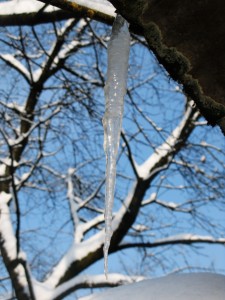 Last year’s winter was a four-month stretch of brutal cold weather and freezing pipes. Don’t become vulnerable again this year!
Last year’s winter was a four-month stretch of brutal cold weather and freezing pipes. Don’t become vulnerable again this year!
If you are a snowbird and leaving town for a few months, it’s best if you drain all your pipes of water by turning the main water valve off and then running the taps until they are dry. Insulate any exposed pipe. You can use heat tape if nothing else.
If you are at home during the winter, during cold snaps you can leave a trickle of water dripping from indoor faucets to keep them from freezing. A small trickle will cost money, but it will be far less than catastrophic damage from a burst pipe. Keep cabinet doors below sinks open so they get more warm air.
If you are going away for a few days, do not turn off your heat. Lower it, but keep enough heat in the house to prevent pipes from freezing.
If you find there is no water coming out of the faucet, you probably have a frozen pipe. It’s best to turn off the water at the main junction and shut off your hot water tank as well. Turning off the water will reduce damage to your home after the pipe thaws. If you know where the frozen pipe is, you can thaw it yourself either by pour hot water over the frozen area or using a hair dryer or heat lamp.
If you can’t unfreeze the pipe, you’ll have to call a plumber. If the pipes freeze and burst, call R.C. White for advice and clean up services.
Examine downspouts to make sure they are working properly. You can use a plumber’s snake to remove any clogs or obstructions. Many downspouts empty into a splash block. Make sure the splash block is placed properly and large enough for the flow of water. You may have to add additional downspout to make sure water is carried away from the home.
If this is too complicated for you, rest assured you can contact R.C. White to do your fall maintenance inspection.
